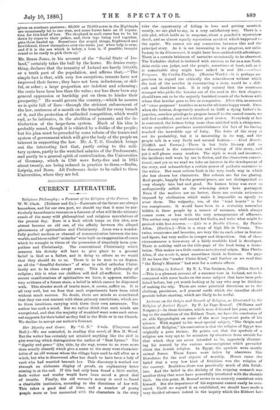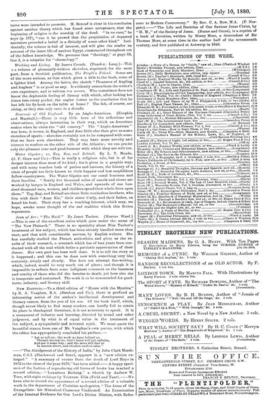Lectures on the Origin and Growth of Religion, as Illustrated
by the Religion of Ancient Egypt. By P. Le Page Rcuouf. (Williams and Norgate.)—In these lectures, which were delivered last year, accord- ing to the conditions of the Hibbert Trust, we have the conclusion of an able Egyptologist on some of the most important parts of his science. With regard to his most special subject, "The Origin and Growth of Religion," his contention is that the religion of Egypt was originally a pare theism. He points out that the symbols of a religion are very apt to be mistaken by observers from outside for that which they are never intended to be, appositely illustrat- ing his remark by the curious misconceptions which prevailed about the Jewish religion. In Egypt, the symbols were mostly animal forms. These forms were taken by observers like Herodotns for the real objects of worship. Hence came the belief that a very low kind of fetishism was the religion of the country. Doubtless, there was practically much of this fetish- ism. And the belief in the divinity of the reigning monarch was another thing that must have powerfully interfered with the theistic faith. On this point, M. Renouf seems to us scarcely consistent with himself. But the importance of his argument cannot easily be over- rated. Could we regard it as established, we should have made a very decided advance indeed in the inquiry which the Hibbert Lec-
tures were intended to promote. M. Renouf is clear in his conclusion against another theory which has found some acceptance, that the beginning of religion is the worship of the dead. "In no case," he says (p. 177), "can it be proved that the propitiation of departed ancestors preceded a belief in a divinity of some other kind." Inci. dentally, the volume is full of interest, and will give the reader an account of the inner life of ancient Egypt, constructed throughout out of the fullest knowledge. We presume that "theology," at page 53, line 2, is a misprint for "chronology."



































 Previous page
Previous page